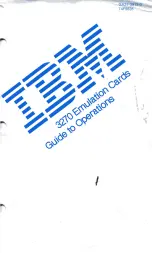
Development Tools User’s Manual
25
IXP2400/IXP2800 Network Processors
Developer Workbench
2.2.4
GUI Toolbar Configurations
Build Versus Debug:
The Workbench maintains two sets of toolbar and docking configurations, one for debug mode and
one for build, or non-debug mode. The GUI configuration that you establish while in build mode
applies only when you are in build mode. Similarly, the debug mode GUI configuration applies
only for debug mode.
Save and Restore:
Menu bar and toolbar configurations are saved when you exit the Workbench. These configurations
persist from one Workbench session to the next.
2.3
Workbench Projects
Projects may be created in two ways:
standard
and
debug-only
.
A
standard
project consists of one or more network processor(s)
,
microcode source files, debug
script files, and Assembler, Compiler, and Linker settings used to build the microcode image files.
This project configuration information is maintained in a Developer Workbench project file (.dwp).
A debug-only project is one in which the user specifies an externally built uof file for each chip in
the project. If a project is created as “debug-only” the user does
not
specify assembler and compiler
source files, manage build settings, or perform uof file builds using the Workbench GUI.
When you start the workbench you can:
•
Create a new project (see
•
Open an existing project (see
•
Save a project (see
•
Close a project (see
•
Specify a default folder for creating and opening projects (see
2.3.1
Creating a New Project
The processor type, that you select when you create a new project, determines which Transactor is
used for simulation. The Workbench will display only the GUI components that are relevant to the
selected processor type. The processor family cannot be changed once a project is created; i.e. you
cannot change your project from an IXP2400 processor to an IXP2800 processor, or vice versa.
The processor types supported by the workbench are:
•
IXP2800 A1
•
IXP2800 A2
•
IXP2800 B0
•
IXP2400 B0
















































